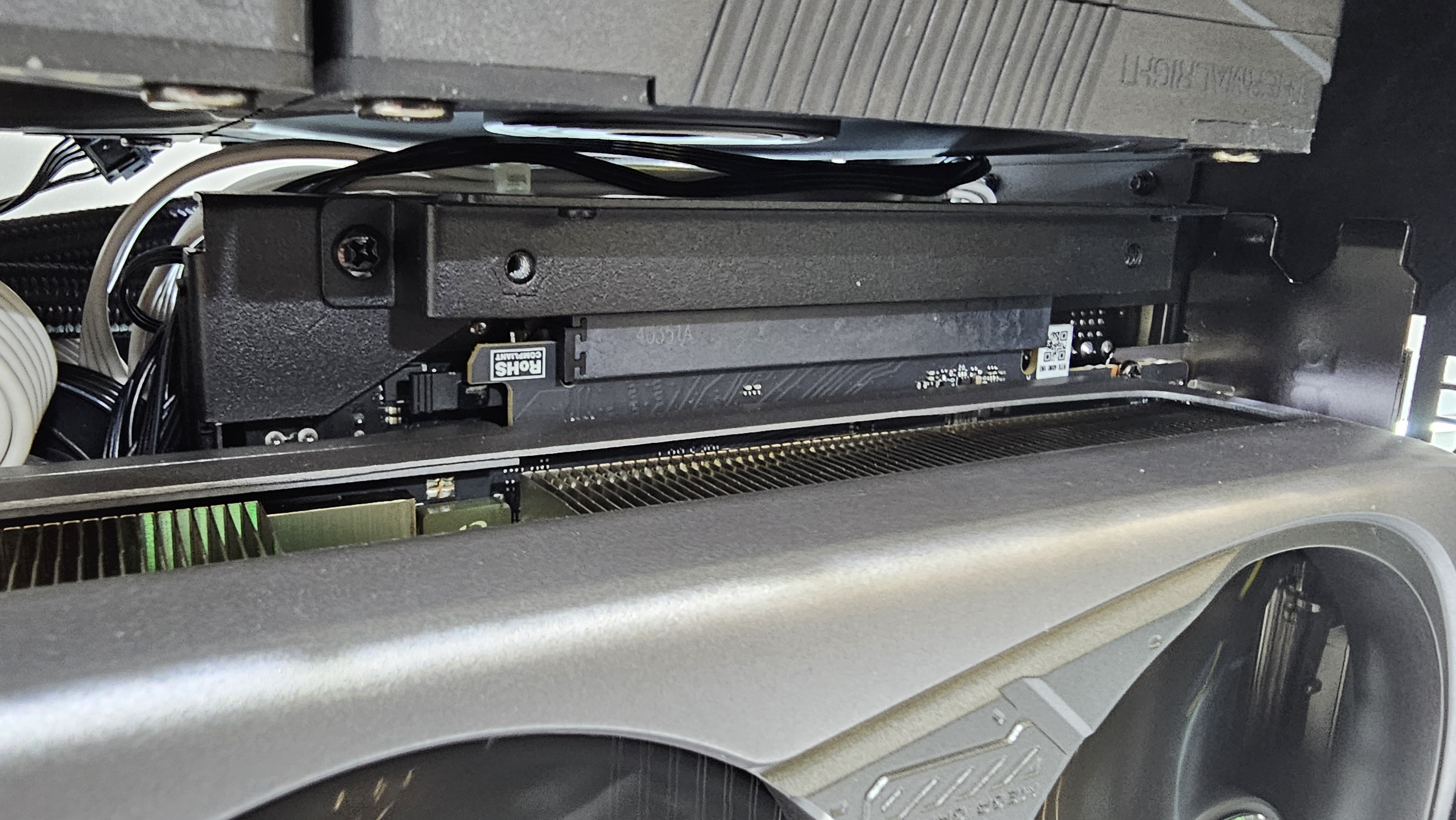Maxsun's new mini-ITX motherboard puts the GPU slot on its backside
A strange motherboard layout could be ideal for SFF PCs.

Maxsun brought many unique motherboards to Computex this year. However, the MS-Challenger B760BKB D5 may be the most distinctive of them all. The mini-ITX motherboard features what the brand calls a "back-to-back" design with a hidden expansion slot.
Like other mini-ITX motherboards, the MS-Challenger B760BKB D5 only offers a single expansion slot. However, Maxsun placed the PCIe 5.0 x16 slot on the back of the PCB, enabling builds where you can mount the graphics card on the back of the motherboard.
As simple as it may look, the design opens many possibilities for different small-form-factor (SFF) layouts without using a PCIe rise cable. In a demonstration, Maxsun presented a compact system where you can install the graphics card at the top of the motherboard instead of at the bottom.
The only issue with the MS-Challenger B760BKB D5's design is that the motherboard isn't compatible with your typical computer case. Like those motherboards with rear connectors, the MS-Challenger B760BKB D5 requires a case tailored to Maxsun's design proposal. The implementation is similar to Maxsun's other offerings, such as the Terminator H770 YTX D5 Wi-Fi.
However, the most significant difference is that the MS-Challenger B760BKB D5 only has a rear expansion slot, unlike previous models, where all the connectors are at the rear. It's interesting that Maxsun only decided to move the expansion slot since the current trend of the year is motherboard vendors moving all the connectors to the PCB's back, giving birth to ecosystems like MSI Project Zero, Asus BTF (Back to the Future), and Gigabyte Project Stealth.




Maxsun didn't share the specifications for the MS-Challenger B760BKB D5, so we'll have to work off the model name and what we can visually see. It's obviously a mini-ITX motherboard based on the Intel B760 chipset. While it'll support 12th Generation Alder Lake, 13th Generation Raptor Lake, and 14th Generation Raptor Lake Refresh chips, the motherboard can't house Intel's upcoming Arrow Lake processors. The MS-Challenger B760BKB D5 seems to have a 10-phase (8+1+1) power delivery subsystem that can handle SKUs from the Celeron to the Core i9 lineups.
Typical of mini-ITX motherboards, there are only two memory slots. The ones on the MS-Challenger B760BKB D5 are DDR5 slots, so you can have up to 96GB of memory and more when 64GB DDR5 memory modules are available. Speed-wise, these should be up to DDR5-8000, assuming your processor can handle it.
Get Tom's Hardware's best news and in-depth reviews, straight to your inbox.
NVMe storage options include two PCIe 4.0 x4 M.2 slots, one on the front and one at the back of the PCB. Meanwhile, there are also four standard SATA III ports. While the primary PCIe 5.0 x16 slot is at the back of the motherboard, the PCIe x4, which likely runs at PCIe 3.0 speeds, remains in front.
Only time will tell whether Maxsun's decision to move the expansion slot only to the motherboard's rear will catch on. Currently, the MS-Challenger B760BKB D5 is the only motherboard with this design, and Maxsun is probably hoping that it'll gain interest from case vendors and consumers so it becomes a thing. However, that will be difficult unless more motherboard manufacturers jump on Maxsun's bandwagon.

Zhiye Liu is a news editor, memory reviewer, and SSD tester at Tom’s Hardware. Although he loves everything that’s hardware, he has a soft spot for CPUs, GPUs, and RAM.
-
BillyBuerger Interesting idea. But really only works for a specific type of PC build where the motherboard and GPU are back to back. I feel it would work better as a bottom edge connector where you could then also use a 180 degree adapter to get the same results as this. But then would also allow for some other configurations. Such as a 90 degree adapter that would put it back into more of a mATX standard mounting or -180 degree and vertical mount in front of the motherboard as is more common. With the connector on the bottom, the riser adapter/cable wouldn't then be covering up any connectors or M.2 below the PCIe slot which is common with existing motherboard layouts.Reply -
Notton This is an odd solution to something that already has a solutionReply
https://www.tomshardware.com/desktops/servers/pci-sig-unveils-copprlink-cables-for-pcie-5-and-6-connections-pcie-70-versions-are-under-development -
MGMorden They already have PCIE extension cables to relocate the slot that does basically the same thing.Reply
To save space on mini-ITX builds what we REALLY need are single slot graphics cards - and maybe a board form factor smaller than ITX. -
LabRat 891 Reply
I'd love to see SFF mobos including risers in that new standard, mounted on the edge or back of the mobo.Notton said:This is an odd solution to something that already has a solution
https://www.tomshardware.com/desktops/servers/pci-sig-unveils-copprlink-cables-for-pcie-5-and-6-connections-pcie-70-versions-are-under-development
1 thing I do like about this board though, is the retention of an x4 slot in the traditional location. Good for a M.2 expansion card, Capture card, or 10GbE card. -
Pierce2623 Reply
Totally changing the motherboard layout doesn’t strike me as trying to solve the same problem as pcie riser cables.Notton said:This is an odd solution to something that already has a solution
https://www.tomshardware.com/desktops/servers/pci-sig-unveils-copprlink-cables-for-pcie-5-and-6-connections-pcie-70-versions-are-under-development